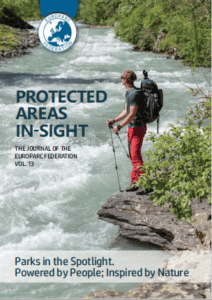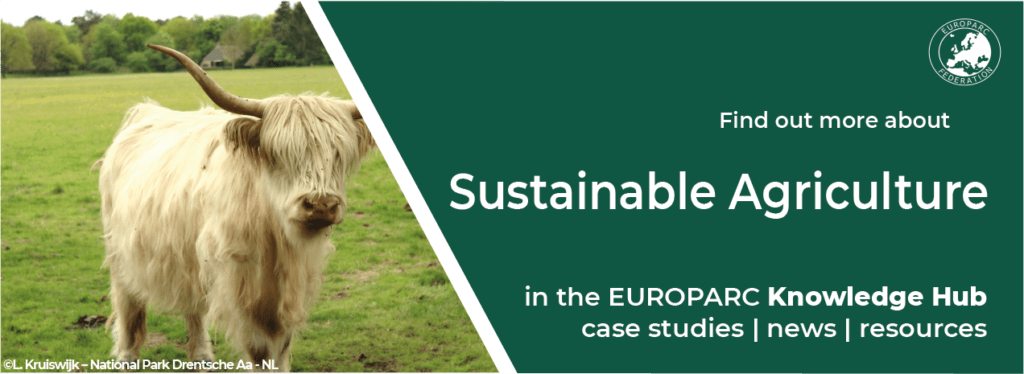First ever sustainable business awarded in Sweden!
The Hotel and Restaurant Kullagårdens Wärdshus, in Mölle, was the first company in Sweden to become a certified sustainable partner of Kullaberg on February the 12th, 2021, through the European Charter for Sustainable Tourism by the EUROPARC Federation.
EUROPARC’s European Charter for Sustainable Tourism
National parks, nature reserves and other Protected Areas are often the main attractions for visitors in regions with magnificent nature. Through various programs and certifications, EUROPARC seeks to encourage and support the efforts made by nature reserves to become sustainable tourism destinations and to cooperate with companies and tour operators in the definition of sustainable tourism. The purpose is for all parties to work sustainably in a long-term perspective and to support the protection of the region’s natural and cultural heritage.
EUROPARC has certified 160 protected areas in 20 countries across Europe. Most are located in southern Europe where mass tourism has become a fact. Kullaberg Nature Reserve was the first protected area in Sweden that in 2017 received the certification as a sustainable tourism destination.
During the Corona Pandemic, we see a large increase in demand from domestic tourism, which is very centered during the summer, which means that we must ensure that animals, nature and cultural finds in the landscape are protected during the high season and that the nature experience is maintained despite increased pressure on nature,
says Elena Bazhenova responsible for the certification of companies within EUROPARC’s work at Kullaberg Nature Reserve at the County Administrative Board of Scania.
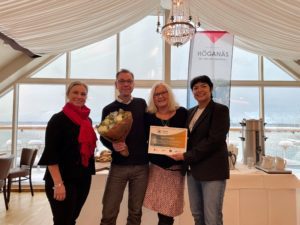
Anna Nilsson, business manager in Höganäs municipality, Peter and Malin Sandström from Kullagårdens Wärdshus and Jimena Castillo, coordinator for EUROPARC at the County Administrative Board. Photo: Josefine Marklund
Kullagårdens Wärdshus
The certification of Kullagårdens Wärdshus is based on those who operate hotel and restaurant facilities investing in sustainability work in a long-term concrete activity plan. Malin and Petter Sandström, who have run Kullagårdens Wärdshus since 2019, together with their staff, have created well-specified and measurable goals in both environmental, social, and economic sustainability for the next three years. The overall goal is to contribute to protecting the rich flora and fauna of Kullaberg through close cooperation with the County Administrative Board and increase accessibility for visiting guests all year round to get a more even distribution of the increasing domestic demand that has occurred after the Corona pandemic.
“We are both happy and proud of this fine award, as sustainability is the foundation of our work and the most important of our seven values,” says Malin.
To be part of and contribute to a sustainable environment is essential for us who are in the middle of one of Sweden’s most beautiful nature reserves.
EUROPARC is happy to welcome Kullagårdens Wärdshus into the Charter Network and hopes more business will follow in their footsteps!
To know more about EUROPARC’s Charter and Sustainable Tourism Programs and Projects:
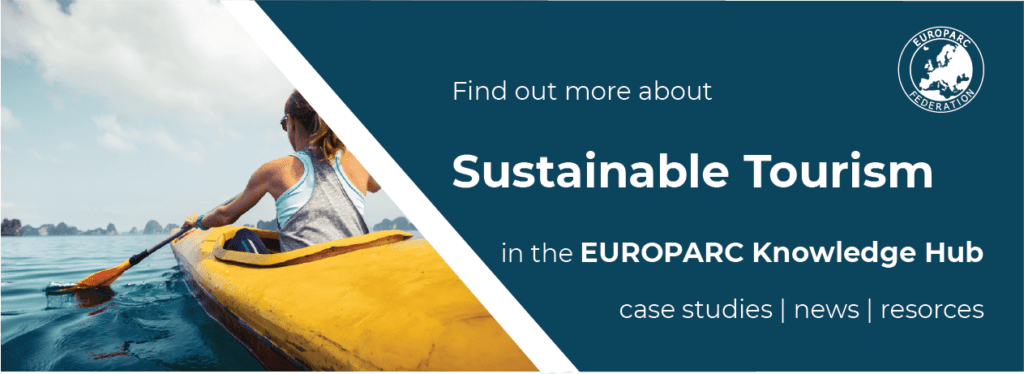
Apply now for EUROPARC’s Star Awards!
The Star Awards are EUROPARC’s Sustainable Tourism Partner Awards directed at the private enterprises following the principles of the European Charter for Sustainable Tourism in Protected Areas.
EUROPARC Sustainable Tourism Partners’ Award
Sustainable Destinations depend on businesses, communities, and municipalities that are all working for a common purpose.
That is why, with the biannual STAR Awards, EUROPARC seeks to celebrate, champion and acknowledge the effort and investments made by tourism businesses to be more sustainable and help to protect their natural and cultural heritage.
The STAR Awards are your chance to really put the sustainability of your business on the map!
You can get inspired by the previous winners of STAR Awards here.
In 2021 we sadly had to postpone the STAR Awards due to the COVID-19 pandemic. We are happy to open them again this year.
Applications that we received last year are still valid and will be considered!
What are the categories?
Business can apply in 4 categories:
- Contribution to Conservation
- Reducing impact on the Environment
- Building my Community
- Communication the values of my Park and my Business
All categories will include some questions regarding “Contribution to Conservation“, as it is a fundamental principle of the Charter for Sustainable Tourism. You are invited to apply in as many categories as you like. To apply, please use THIS ONLINE FORM in either French, Italian, Spanish or English. The application will close on the 1st of April 2022.
You can get all the information on the STAR Awards and the application process in our guidelines:
English_Guidelines for candidates
Espanol_Instrucciones para los candidatos
Francais_Directives destinees aux candidats
Protected Area In-Sight 2021 out now!
Every year, the EUROPARC journal ‘Protected Areas In-Sight’ brings you the highlights of our annual Conference. It includes best practice on a wide range of topics, relevant for all nature and Protected Area professionals. You can now read the 13th edition online!
Parks in the Spotlight. Powered by People; Inspired by Nature…
… was the theme of our Conference in 2021. From different European policies, to the big increase in visitors during COVID-19, Protected Areas are gaining attention everywhere. In our Protected Areas In-Sight this year, we look at different ways Parks can deal with this spotlight they are under.
As our planet currently faces multiple challenges, we need to remember that Parks and Protected Areas hold the key to finding natural solutions. In this context, strong capacity building for nature professionals, involvement of multiple stakeholders, and adaption to climate change are key.
Says our Executive Director, Carol Ritchie.
In this issue, you can find different readings and food for thought on Rewilding in Europe, COP26, capacity building and the role of Periurban parks for a green and healthy Europe. It also features best practice examples on climate change adaptation, youth involvement and visitor management. Additionally, we had a closer look at the relation between health and nature and the importance of partnerships for nature.
Additionally, as a tribute to the 20 years anniversary of the European Charter for Sustainable Tourism, the journal includes a section with viewpoints from those who were part of the beginning of this pioneering project.
Contributions have come from Rewilding Europe, the European Network for Outdoor Sports, EUROPARC Council Members, Fungobe and many more. We thank all that have contributed to this edition of our journal.
Available in 3 languages
The Protected Areas In-Sight is annually produced by EUROPARC in English, French and German. You can download the version you need below. Our members will receive a paper copy in the upcoming weeks.
For all the previous editions, visit our library here.
EUROPARC’s recommendations for the CAP National Strategic Plans
There should be an active Role for Protected Areas and Natura 2000 sites, in the National Strategic Plans of the European Common Agricultural Policy.
2021 saw the end of the long process to adopt the new European Common Agricultural Policy.
In our Policy Paper “Protected Areas as laboratories for Sustainable Agriculture. The role of Protected Areas in implementing the EU Green Deal & EU Agricultural Policies – 2021”, we have underline how rural Protected Areas are crucial for the establishment of new and real eco-friendly agriculture.
Therefore, the EUROPARC Federation, with the support of the EUROPARC Commission for Sustainable Agriculture and Protected Areas, has elaborated some specific recommendations, in order to value the strategic contributions that Natura 2000 sites and Protected Areas offer in reaching the CAP green ambitions and to ensure the specific needs of Protected Areas and local farmers in linking sustainable agriculture and biodiversity protection are effectively considered.
With these recommendations, EUROPARC seeks to:
- Encourage National and Regional authorities to take into account the role of the Protected Areas and Natura 2000 sites in the elaboration of the National Strategic Plans and as key contributors to the green ambitions of the new Common Agricultural Policy.
- Request the European Commission to consider, in the evaluation and approval of National Strategic Plans, if Protected Areas have been adequately included in the plans.
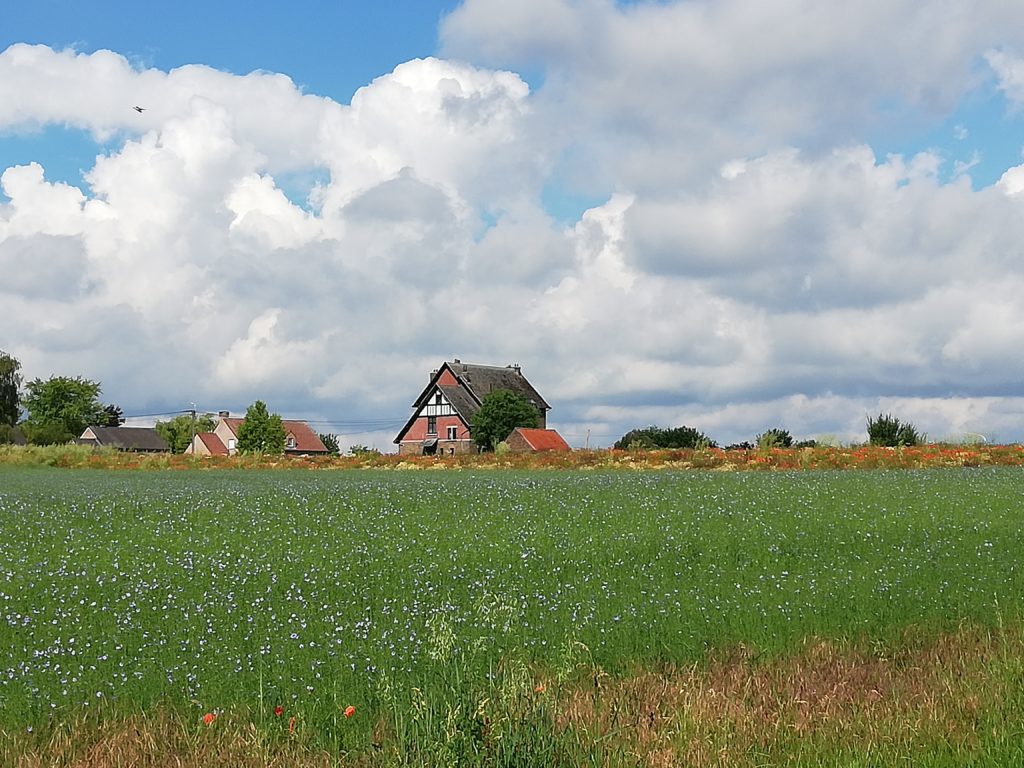
Bourdinal Mehaigne Nat Park (BE) by S.Petrosillo
EUROPARC’s recommendations
1. Management Authorities in charge of Protected Areas and Natura 2000 Sites must be actively included as key stakeholders in the preparation, monitoring and evaluation of National Strategic Plans. Protected Areas and Natura 2000 Sites in rural areas have specific expertise and are laboratories of sustainability. Protected Areas can be key actors in supporting farmers to achieve green targets, encouraging the implementation of eco-schemes and agri-environmental measures.
2. Farmers in Protected Areas and Natura 2000 sites should receive special and specific attention in the National Strategic Plans. Farming in and nearby Protected Areas involves working with stakeholders with diverse priorities, approaches and needs. The new Common Agricultural Policy should recognise these needs and incentivise and reward farmers who are working in or close to Protected Areas and Natura 2000 Sites, engaged in environment-friendly agriculture in partnership with the Protected Areas’ authorities.
3. Partnerships between farmers and Protected Areas and Natura 2000 managers must be promoted and supported by the National Strategic Plans with concrete actions and funds. Farmers and Protected Areas managers can and must be allies, because only by working together in active and positive collaboration, can we reach a more sustainable agriculture, good for nature and good for farmers. This is only possible if based on trust and long-term collaborations: effective dialogue and positive partnerships between Protected Areas and farmers is a necessity and must be adequately resourced.
4. The National Strategic Plans must be consistent with the Natura 2000 Directives and the EU Biodiversity Strategy. Alongside the work of Protected Areas, in particular, the National Strategic Plans should: enhance and improve the management of permanent meadows and pastoral areas; preserve wetlands through incentive and collective measures; develop and maintain agro-ecological infrastructures; better integrate cultural aspects and functional biodiversity.
5. The National Strategic Plans must ensure that no perverse subsidies, driving unsustainable intensification leading to habitat loss or pollution inside or alongside Protected Areas, would be permitted.
6. The National Strategic Plans must support capacity building to improve practical skills for sustainable and eco-friendly farming: actions and training should be directed both to farmers and to Protected Areas’ Management Authorities. The National Strategic Plans should assure that the Farm Advisory Systems operating in and nearby Protected Areas and Natura 2000 sites are able to offer the appropriate understanding and knowledge necessary in these specific contexts.
7. The National Strategic Plans, in coherence with the EU Farm to Fork Strategy, have to support the promotion of sustainable, healthy food products coming from Protected Areas and Natura 2000 sites: awareness campaigns and public events, gathering Protected Area managers and farmers, should promote their commitment and community engagement. Protected Areas have long-standing experience in working with farmers to achieve fair, healthy and environmentally-friendly food systems. They also stimulate hospitality and food service practices in collaboration with the local tourism sector. For this reason, Protected Areas and farmers together can also contribute to influence consumers’ behaviours and to strengthen positive relations between farmers and consumers.
8. The National Strategic Plans must safeguard and promote cultural diversity in Protected Areas, where agricultural activities and traditions are actively supported in respect for landscape management: this is essential to safeguard territorial identity, avoid homogenization and avoid the loss of knowledge, most of all from collective memory. With their natural and cultural heritage and with their holistic approach in protecting this cultural richness, Protected Areas have the vast experience needed to combat negative and unsustainable transformation of rural landscapes and land abandonment.
9. The National Strategic Plans must recognise the possibilities of and interest in experimenting with innovative, enhanced sustainable technical engineering eco-regimes, which encourage real changes in practices, better targeting of direct aid and a second pillar that supports agricultural and food transition. Protected Areas represent ideal laboratories where traditional methods are recuperated and innovation is nurtured, whilst working to balance the interests of different local actors.
10. At local level, the Strategic Plans should foster the capacities of Protected Areas and Natura 2000 management bodies to plan, develop, manage local voluntary agreements that go beyond statutory requirements and are based on specific ‘on- the-ground’ nature, land, and biodiversity conservation challenges. “Results based schemes” should be an alternative to can be combined with more traditional “prescription-based” measures. Together with farmers, a monitoring scheme with clear indicators should be established to control and evaluate progress in each Protected Area and Natura 2000 site.
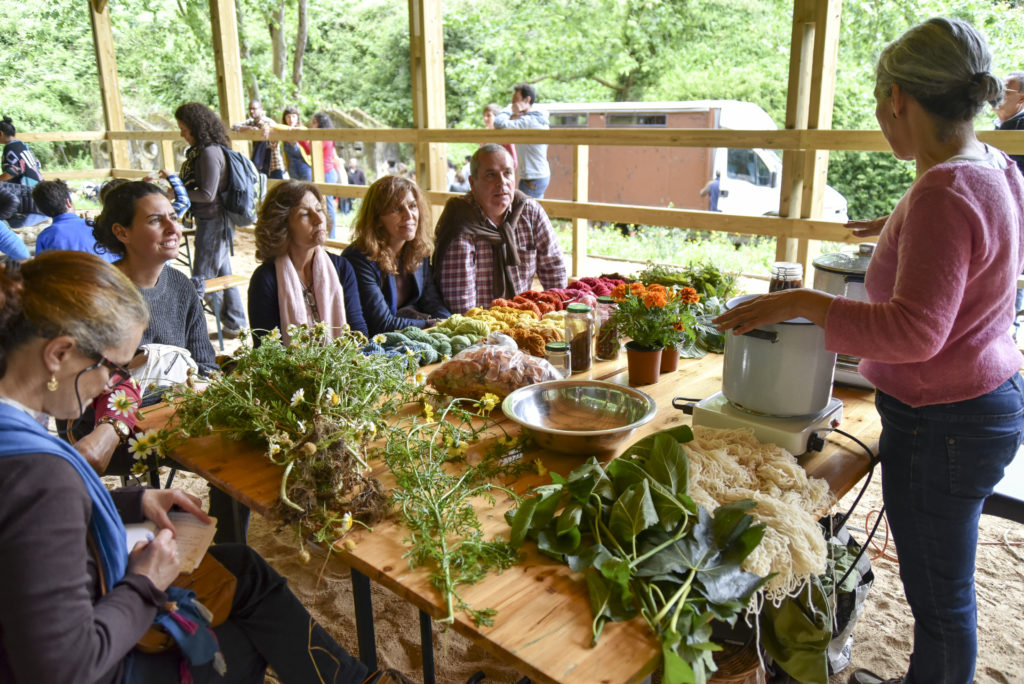
Cascais Ambiente (PT)
